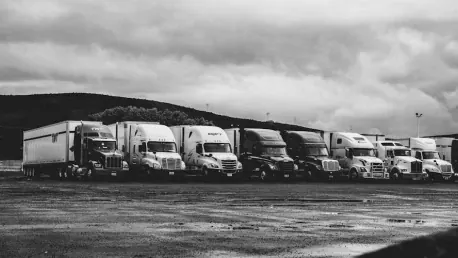The global transportation and logistics industry is navigating an intricate landscape of opportunities and challenges as it looks to the future, with a keen eye on expansion and sustainable growth. According to Willis’ latest Global Transportation and Logistics Risk Report, 57% of industry executives see infrastructure investments as vital business prospects over the next two years. This includes investments aimed at upgrading rail systems, ports, and airports, as well as constructing facilities and technologies pivotal for a clean energy transition. Yet, the industry’s optimism is tempered by the complexities introduced by regulatory frameworks in environmental and cybersecurity domains, with 53% of respondents identifying these as top risks. Balancing expansion with compliance is proving to be a nuanced endeavor, underscoring the intricacy of today’s market dynamics.
Infrastructure Investment and Global Trade
Expansive infrastructure investments are seen as pivotal by industry leaders aiming to harness emerging opportunities. With 57% of executives highlighting these investments as fundamental, enhancing rail, port, and airport capacities forms a strategic cornerstone. Additionally, the development of clean energy technologies is driving significant capital infusion. This dual focus addresses both operational efficiency and the imperative to pivot towards sustainability. The momentum is not solely confined to physical infrastructure; digital transformation is equally prioritized, facilitating improvements in supply chain visibility and efficiency. Advanced technologies offer a dual advantage: optimizing operations while aligning with stringent regulatory requirements.
Global trade presents another avenue teeming with potential, as evidenced by 50% of respondents viewing it as a key opportunity. Expanding into burgeoning markets provides a wider berth for logistics companies to navigate, potentially mitigating risks associated with market saturation. Moreover, 44% of executives have plans to leverage these market expansions to bolster adjacent logistics and supply-chain businesses, further embedding themselves in the fabric of global commerce. This interconnectedness augments resilience, enabling businesses to better absorb and adapt to market fluctuations. In essence, a strategic synthesis of infrastructure upgrading and market expansion is fortifying the industry’s growth trajectory.
Regulatory Complexities and Operational Risks
Despite the palpable optimism, the transportation sector is riddled with complexities emanating from environmental and cybersecurity regulations. As 53% of executives pointed out, the operational costs and intricacies associated with these regulations are formidable. Navigating the labyrinth of compliance involves considerable resource allocation, both in terms of financial investment and manpower. Regulatory adherence is not merely a matter of avoiding penalties but a fundamental aspect of sustainable business practices. The dual pressure to curtail carbon emissions while fortifying cybersecurity measures necessitates a robust, multifaceted strategy.
Operational risks further compound these challenges, with 47% of respondents listing business interruptions as a significant concern. Factors such as global instability, natural disasters, and operational failures contribute to these interruptions, each posing unique challenges. The ever-present possibility of supply chain disruptions exacerbates these risks, cited by 37% of executives as a critical threat. This vulnerability is heightened by global interdependencies, where a perturbation in one part of the world reverberates across the supply chain. Disturbances from tariff wars, severe weather events, and supplier delays all contribute to the precariousness of supply chain stability. The intricate dance between risk management and growth requires a vigilant, proactive approach.
Technological Innovation and Sustainability
Industry leaders consider broad infrastructure investments crucial for leveraging new opportunities. With 57% of executives naming these investments essential, upgrading rail, port, and airport facilities becomes a strategic priority. Concurrently, significant capital is being funneled into developing clean energy technologies. This dual approach tackles both the need for operational efficiency and the urgent shift towards sustainability.
Moreover, the focus extends beyond physical infrastructure to include digital transformation, improving supply chain visibility and efficiency. Advanced technologies not only optimize operations but also ensure compliance with stringent regulatory requirements.
Global trade emerges as another significant opportunity, with 50% of respondents seeing it as vital. Entering growing markets allows logistics firms to mitigate risks from market saturation. Additionally, 44% of executives plan to use these expansions to strengthen related logistics and supply-chain businesses, making them more resilient and adaptable to market changes. Ultimately, the strategic blend of upgrading infrastructure and expanding markets is underpinning the industry’s growth path.









